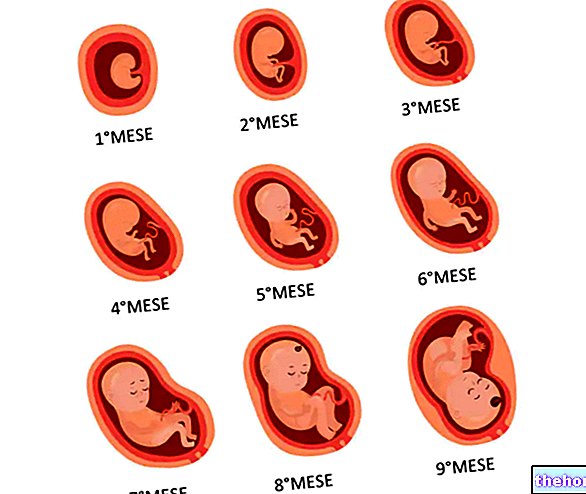See also: sex determination
Biological Bases
Each cell of the human organism, with the exception of the sexual ones, contains 23 pairs of chromosomes; of these, 22 contain information for body development, while the 23rd pair contains the gene sequences for the development of internal and external sexual organs. two sex chromosomes, designated by the letters X or Y, are therefore decisive for the sex of the individual. In a female, this pair is made up of two relatively large chromosomes, called X, while in the male we find an X chromosome next to another, much smaller and asymmetrical, called Y.
The sex cells or gametes (ovum in the female and spermatozoa in the man) possess only half of the chromosomal set, therefore 23 single chromosomes, due to the meiotic division that occurs during their formation. Thanks to this division, when the egg is the sperm come together, the resulting cell, called zygote, contains a complete set of 46 chromosomes (23 pairs). During the reproduction of the gametes, the distribution of the single chromosomes is RANDOM: the mother, being endowed with the XX couple, will always and in any case transmit the X chromosome, while the father (XY) will produce Y spermatozoa and X spermatozoa.
SUMMARY: each female somatic cell (all the cells of the organism with the exception of the sexual ones) contains 2 X chromosomes, while each female gamete (ovum) contains only one.
In the father, all somatic cells are characterized by an X chromosome and a Y chromosome, while the sex cells can contain either an X chromosome or a Y chromosome:

When an egg, with its X chromosome, merges with a sperm with the Y chromosome, a male will be born; when, on the other hand, an egg merges with a sperm containing another X chromosome, the unborn child will be female.
In other words, during conception, the presence or absence of the Y chromosome in the paternal spermatozoon determines whether fetal development will proceed, respectively, towards the male or female line. The sex of the unborn child, therefore, depends exclusively on the genetic contribution of the father.
Curiosity
Scientific research has highlighted some differences between Y and X spermatozoa; the first (male) would be smaller and faster, but not very resistant, while the second (female) would be slower, but stronger and longer-lived.
Under this premise, some precautions could offer a greater chance of conceiving a child of a certain sex. In particular, to favor the conception of a boy, it would be useful:
- consuming close sexual intercourse with each other;
- concentrate sexual intercourse on the day of ovulation;
- during intercourse, adopt a position that involves deep penetration.
Conversely, the conception of a girl would be favored by:
- having infrequent sexual intercourse;
- consuming sexual intercourse in the preovulatory period;
- adopt a position that involves shallow penetration during intercourse.
Although based on a scientific assumption, these techniques still lack scientific confirmation of their real effectiveness.
Clinical Applications
Thanks to the differences linked to their specific genetic patrimony, it is possible to separate the Y spermatozoa from the X spermatozoa with biochemical methods. genetic diseases related to sex in one's family.
A mother with color blindness or haemophilia, for example, will have a 50% chance of having a sick male, while the daughters will be healthy or at most healthy carriers of the disease (if the father is healthy). Conversely, when a male affected by these diseases has children, no male child will be affected, while all female daughters will be carriers (if the mother is healthy). Hemophilia and color blindness are in fact two hereditary diseases linked to the sex chromosome X.
















.jpg)











